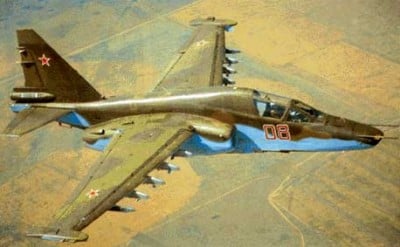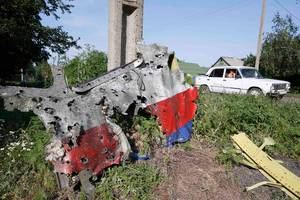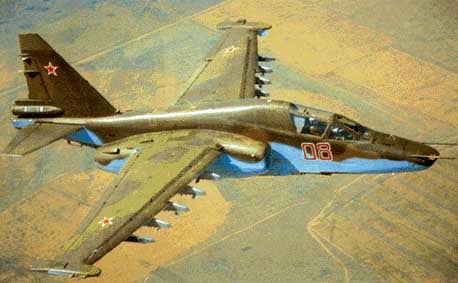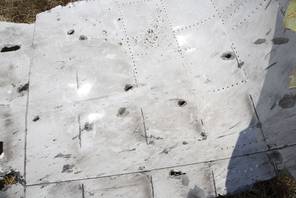“Support MH17 Truth”: OSCE Monitors Identify “Shrapnel-Like Holes” indicating Shelling. No Evidence of a Missile Attack. Shot Down by a Military Aircraft?

According to the report of German pilot and airlines expert Peter Haisenko, the MH17 Boeing 777 was not brought down by a missile.
What he observed from the available photos were perforations of the cockpit:
The facts speak clear and loud and are beyond the realm of speculation: The cockpit shows traces of shelling! You can see the entry and exit holes. The edge of a portion of the holes is bent inwards. These are the smaller holes, round and clean, showing the entry points most likely that of a 30 millimeter caliber projectile.
 [click image right to enlarge]
[click image right to enlarge]Based on detailed analysis Peter Haisenko reached the conclusion that the MH17 was not downed by a missile attack:
This aircraft was not hit by a missile in the central portion. The destruction is limited to the cockpit area. Now you have to factor in that this part is constructed of specially reinforced materialThe OSCE Mission
It is worth noting that the initial statements by OSCE observers (July 31) broadly confirm the findings of Peter Haisenko:
Monitors from the Organization for Security and Cooperation in Europe reported that shrapnel-like holes were found in two separate pieces of the fuselage of the ill-fated Malaysia Airlines aircraft that was believed to have been downed by a missile in eastern Ukraine.The monitoring OSCE team has not found evidence of a missile fired from the ground as conveyed by official White House statements. As we recall the US ambassador to the UN Samantha Power stated –pointing a finger at Russia– that the Malaysian MH17 plane was “likely downed by a surface-to-air missile operated from a separatist-held location”.
Michael Bociurkiw of the OSCE group of monitors at his daily briefing described part of the plane’s fuselage dotted with “shrapnel-like, almost machine gun-like holes.” He said the damage was inspected by Malaysian aviation-security officials. Wall Street Journal, July 31, 2014)
The initial OSCE findings dispel the claim that a Buk missile system brought down the plane.
Evidently, inasmuch as the perforations are attributable to shelling, a shelling operation conducted from the ground could not have brought down an aircraft traveling above 30,000 feet.
Ukraine Su-25 military aircraft within proximity of MH17
 Peter
Haisenko’s study is corroborated by the Russian Ministry of Defense
which pointed to a Ukrainian Su-25 jet in proximity of the plane.
Peter
Haisenko’s study is corroborated by the Russian Ministry of Defense
which pointed to a Ukrainian Su-25 jet in proximity of the plane.Ironically, the presence of a military aircraft within proximity of the MH17 plane is also confirmed by a BBC report conducted at the crash site on July 23.
All the eyewitnesses interviewed by the BBC confirmed the presence of a Ukrainian military aircraft flying within proximity of Malaysian Airlines MH17 at the time that it was shot down:
Eyewitness #1: There were two explosions in the air. And this is how it broke apart. And [the fragments] blew apart like this, to the sides. And when …The original BBC Video Report published by BBC Russian Service on July 23, 2014 has since been removed from the BBC archive. In a bitter irony, The BBC is censoring its own news productions.
Eyewitness #2: … And there was another aircraft, a military one, beside it. Everybody saw it.
Eyewitness #1: Yes, yes. It was flying under it, because it could be seen. It was proceeding underneath, below the civilian one.
Eyewitness #3: There were sounds of an explosion. But they were in the sky. They came from the sky. Then this plane made a sharp turn-around like this. It changed its trajectory and headed in that direction [indicating the direction with her hands].
Media Spin
The media is now saying that a missile was indeed fired but it was not the missile that brought down the plane, it was the shrapnel from the missile which punctured the plane and then led to a loss of pressure. In an utterly absurd report, the BBC quoting Ukraine officials states that:
The downed Malaysia Airlines jet in eastern Ukraine suffered an explosive loss of pressure after it was punctured by shrapnel from a missile.They say the information came from the plane’s flight data recorders, which are being analysed by British experts.
However, it remains unclear who fired a missile, with pro-Russia rebels and Ukraine blaming each other.
Many of the 298 people killed on board flight MH17 were from the Netherlands.
Dutch investigators leading the inquiry into the crash have refused to comment on the Ukrainian claims.

The GSh-302 firing gun operated by an Su-25 is able to fire 3000 rpm which explains the numerous entry and exit holes.
According to the findings of Peter Haisenko:
If we now consider the armament of a typical SU 25 we learn this: It is equipped with a double-barreled 30-mm gun, type GSh-302 / AO-17A, equipped with: a 250 round magazine of anti-tank incendiary shells and splinter-explosive shells (dum-dum), arranged in alternating order. The cockpit of the MH 017 has evidently been fired at from both sides: the entry and exit holes are found on the same fragment of it’s cockpit segment (op cit)
No comments:
Post a Comment